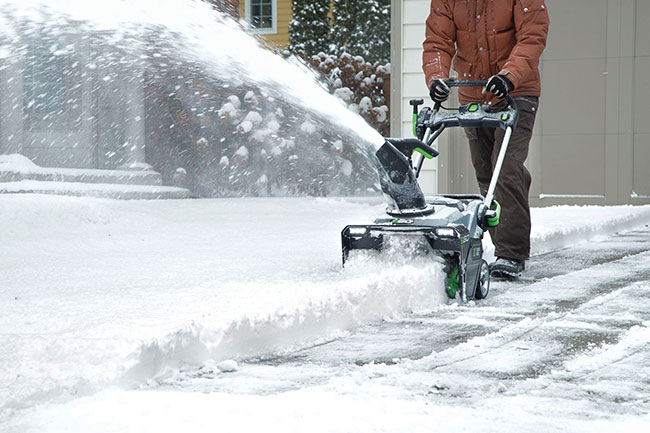
Features
Ice & Snow Equipment
Health and Safety: Get a safe handle on winter equipment
December 15, 2021 By CCOHS

The annual signs of winter are inevitable: the snow starts to fall, the temperatures hit below freezing, and the chill can be felt from our toes to our nose. As the seasons change, it’s important to be prepared and adapt the way we work outdoors. Whether it’s wearing the appropriate layers, using seasonal equipment, or being mindful of surroundings, outdoor work is heavily impacted by the changing season.
How do you keep your crew safe and thriving during these cold winter months? If your workplace has an existing health and safety program, including a winter safety plan can help give everyone the information and tools needed to prepare accordingly. A winter safety plan should include risk assessments, equipment inspections, safe handling tips, emergency procedures, and training.
Risk assessments
Conducting a risk assessment can help identify hazards that have the potential to cause harm. For example, when using a snow thrower (or blower), workers may encounter debris, branches, or loose gravel which can be a risk to workers and the equipment. To complete the risk assessment, analyze and evaluate each hazard associated with the task and determine the risk’s likelihood and severity.
Once the risk has been assessed, determine appropriate controls to eliminate the hazard or reduce the risk when the hazard cannot be eliminated. In this case, ensuring that workers clear the area and making sure no one is in the line of fire can help reduce the risk of injury.
Equipment inspection
Another step to include in your winter safety plan is to inspect and assess all snow and ice management equipment prior to the start of the season. This will help with your risk assessment to identify potential hazards and controls, which in turn may help prevent incidents, injuries, and illnesses.
Preventive and pre-season maintenance is also imperative for optimal performance. Due to the nature of seasonal equipment, by the time winter starts again, a lot of it has not been used for months. Inspecting equipment prior to its first use can help determine if any repairs or maintenance are necessary, before the equipment is needed.
Workers should also make sure to conduct a pre-operational or circle check before using any equipment to detect damage, leaks, and other issues that may affect the safe use of the machine such as fluid levels, attachments, tires/tracks, back up alarms, and lights.
Safe handling
Make sure workers are prepared to handle all snow and ice removal equipment safely. Provide them with adequate time to warm up their muscles and to work at a pace that is manageable and safe. Also, are they dressed appropriately for the weather conditions and the task at hand? Are they using proper technique when lifting or pushing equipment while keeping in mind that the ground may be slippery?
Emergency procedures
Workers should understand all procedures related to reporting incidents, providing first aid, and receiving medical care. These procedures should be clear and accessible so that everyone is prepared in the event of an emergency.
For each shift, at least one trained person should be assigned the responsibility of attending to emergencies. Each jurisdiction has specific requirements relating to first aid, so always verify the legislation for a first aid provider or attendant. While working in the cold, consider having a buddy system in place as workers should look out for one another and be alert for the symptoms of hypothermia and other cold injuries. If they must work alone, an effective and reliable means of communication, check-in procedures, and other controls to alert others in the event of an emergency should be established.
Education and training
In addition to examining all equipment prior to use, it’s crucial that workers know how to handle the equipment safely during the winter. Make sure all workers receive the appropriate training and instruction for the assigned tasks.
Include guidance on how to inspect all equipment before use and reference the operator’s manual and safe work procedure for the safe handling and operation of the equipment during training.
The Canadian Centre for Occupational Health and Safety (CCOHS) promotes the total well being of workers in Canada by providing information, training, education, systems and solutions that support health and safety programs and injury and illness prevention.
www.ccohs.ca
Print this page